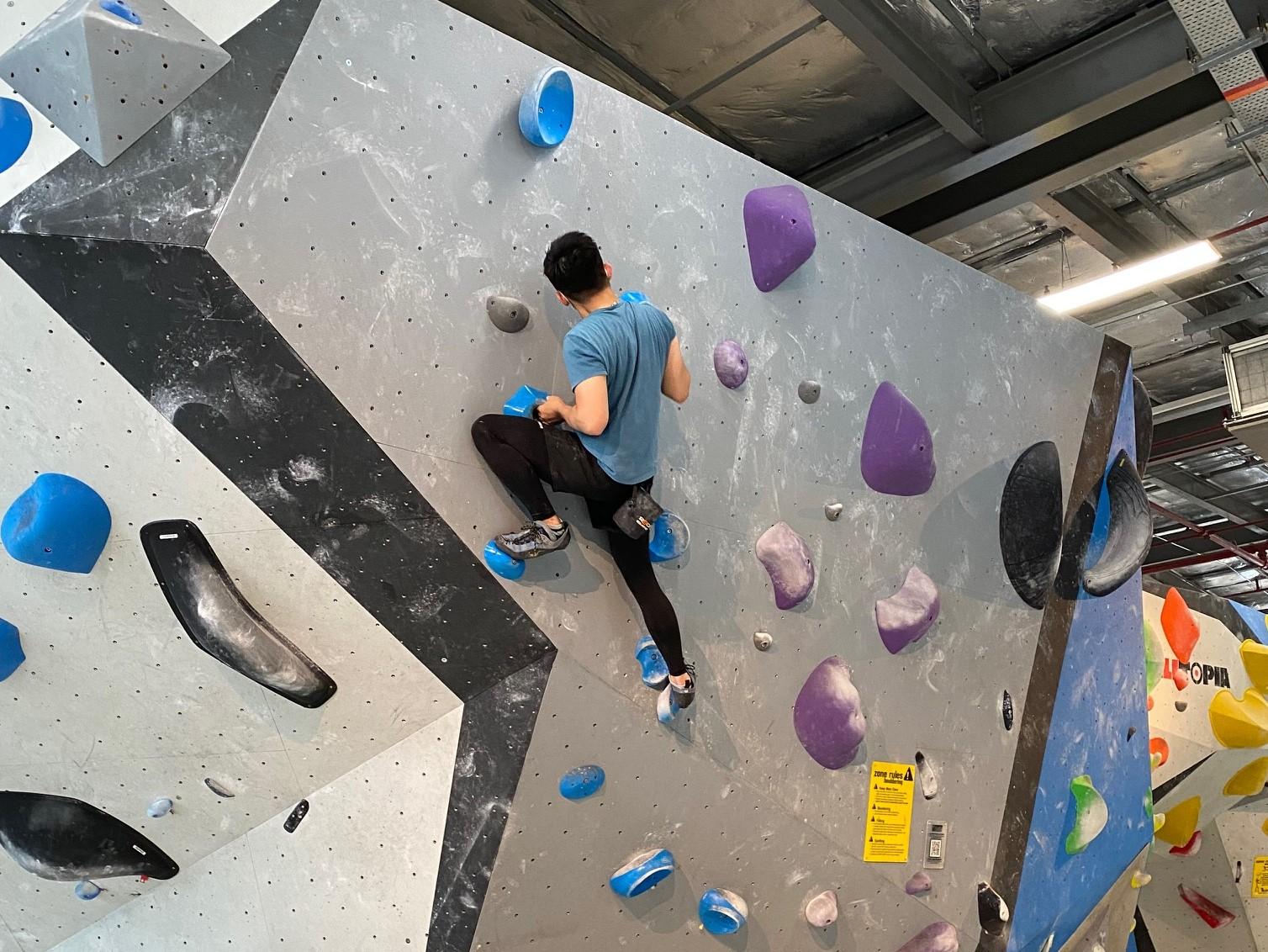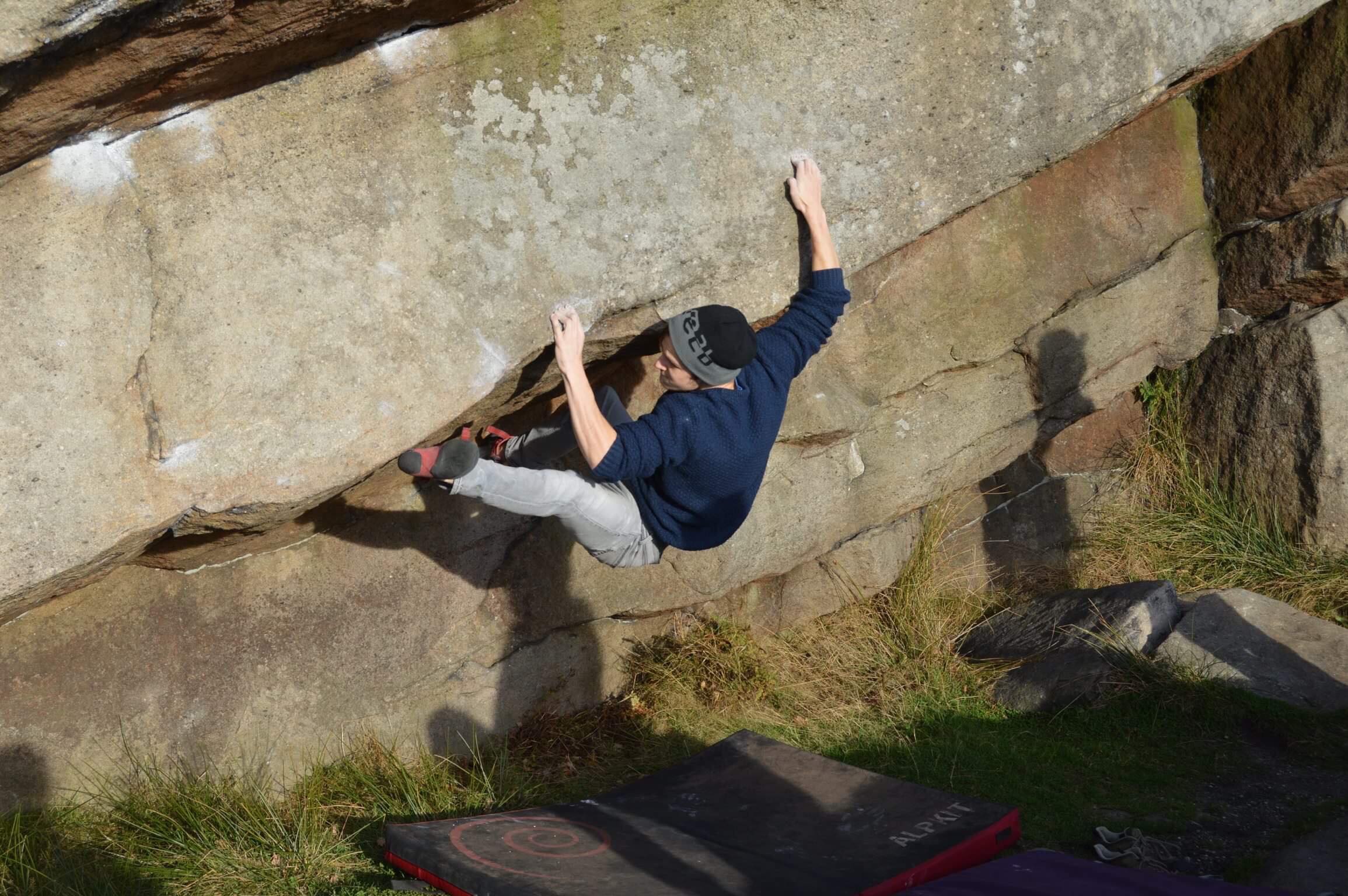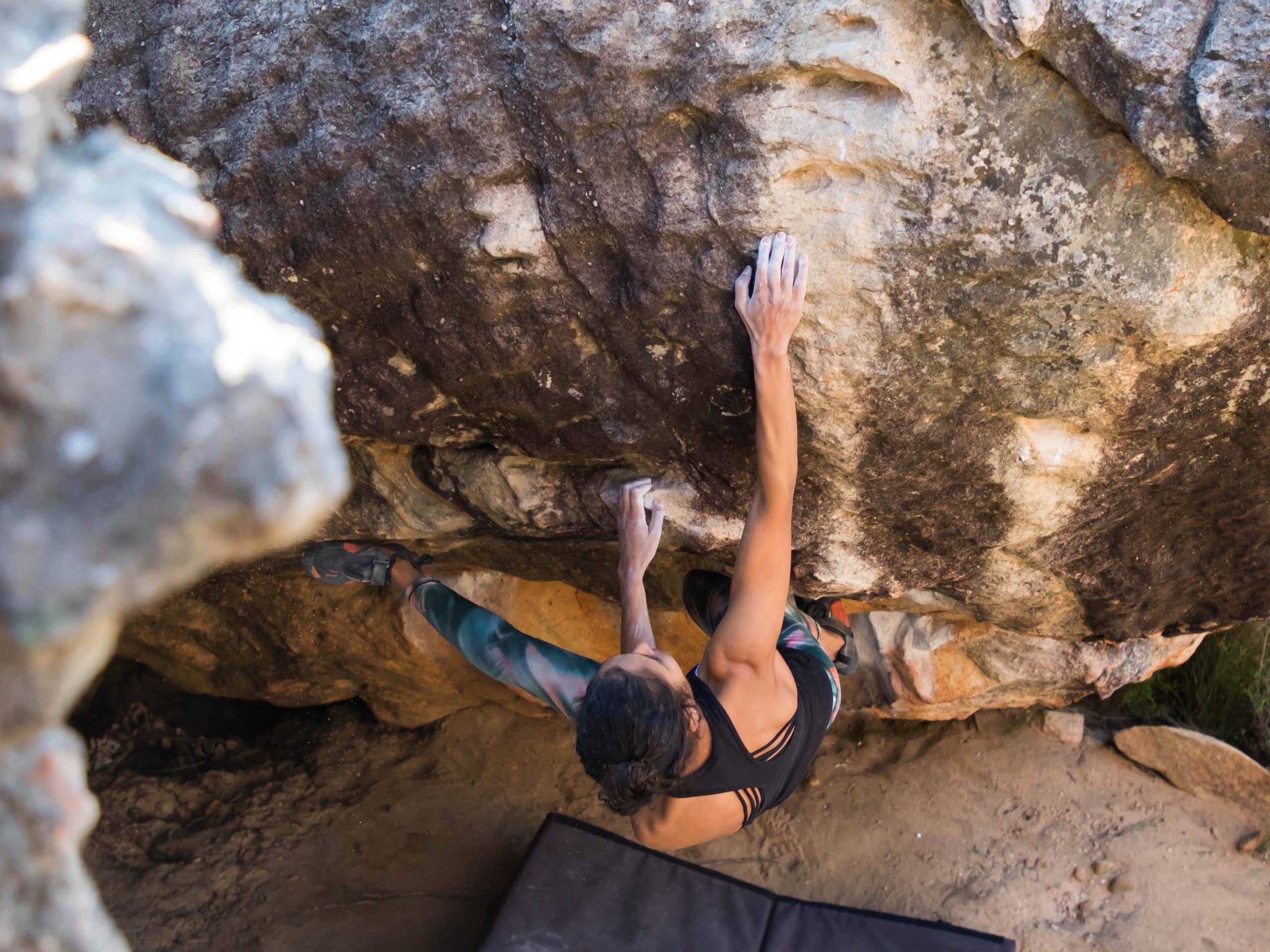Get Bouldering!
This site is for educational purposes with the code basics from HTML5 UP and released for free under the Creative Commons.
Bouldering is a style of climbing that does not use ropes, a harness, or a belay partner. This style of climbing usually has limits to the heights of the walls that an individulal can climb, generally around 20 feet. These climbs are also shorter than a top-rope route. Bouldering is a form of climbing where you need to use crash pads for fall protection, since you are not secured with a rope. Some climbers tend to use a spotter for assistance instead of a belay partner. A spotter positions themselves in certain ways to aid the climber in minimizing fall injuries (this is not always a requirement though). Falling is another skill to learn when bouldering specifically. There are ways to fall that will not cause severe damage to your body. A key to falling is trying to land on your feet, and rolling back once you have landed to distribute the impact.

You can boulder indoors or outdoors! There are indoor climbing gyms that will have areas set up specifically for bouldering. These facilities will have all the necessary tools in order for you to partake in the climb. You will need to see if your local gym rents out pairs of simple climbing shoes to use. Keep in mind that rental gear will not be anything fancy, if you wish to buy your own to grow as a climber you are always able to do so. If you decide to boulder outdoors, you will need to bring your own gear. You want to make sure that you have access to crash pads. Outdoor climbing can be extra dangerous if you do not have enough safety gear. Outdoor climbing can be a great use of a spotter as well to prevent your falls from missing the crash pads. When learning boulders, or trying harder grades you will fall. You will need to take all percautions possible.

Every form of climbing has different ways of grading. Different countries also use different ways to grade climbs, generally it is quite similar though. Understanding climbing grades are very important for climbers to know what is obtainable, and what their goals can be.
The most common boulder grading is called the V-Scale.
| VB - V1 ~ Beginner |
| V2 - V3 ~ Novice |
| V4 - V5 ~ Intermediate |
| V6 - V8 ~ Advanced |
| V9 + ~ Expert |
Another form of grading is called the Fontainebleau Scale. This scale uses the same form of numbers, however they divide further with letters.
| Font 4C ~ V0 |
| Font 6A ~ V3 |
| Font 7A ~ V5 |
| Font 8A ~ V9 |
